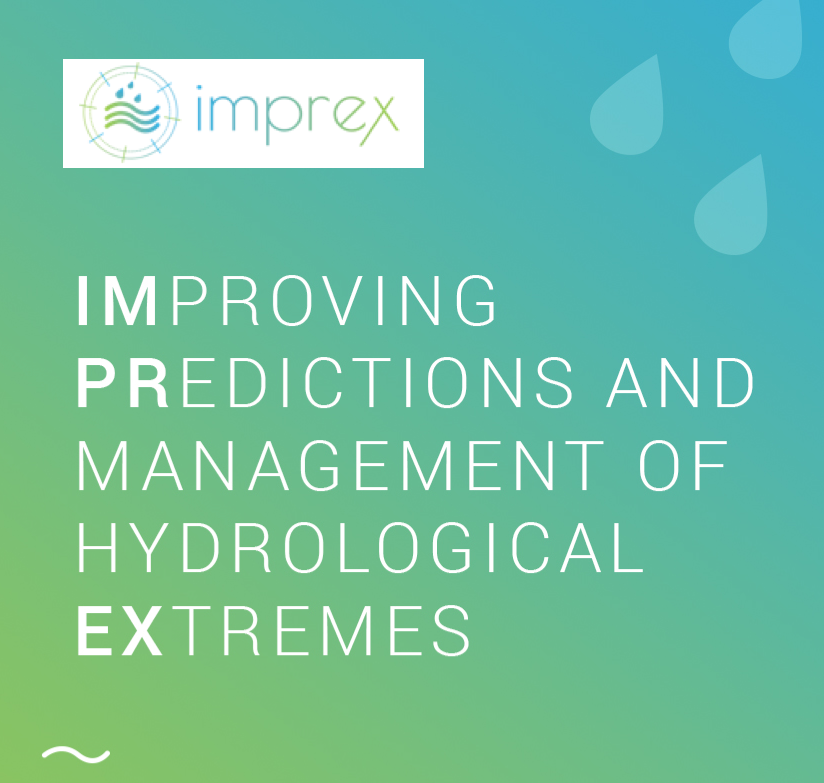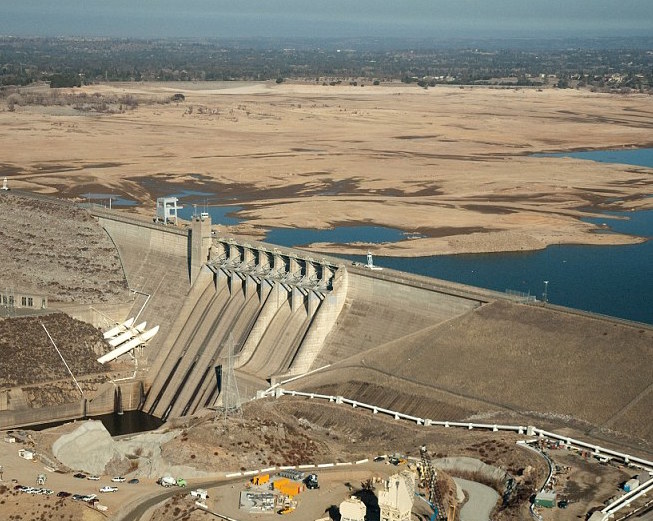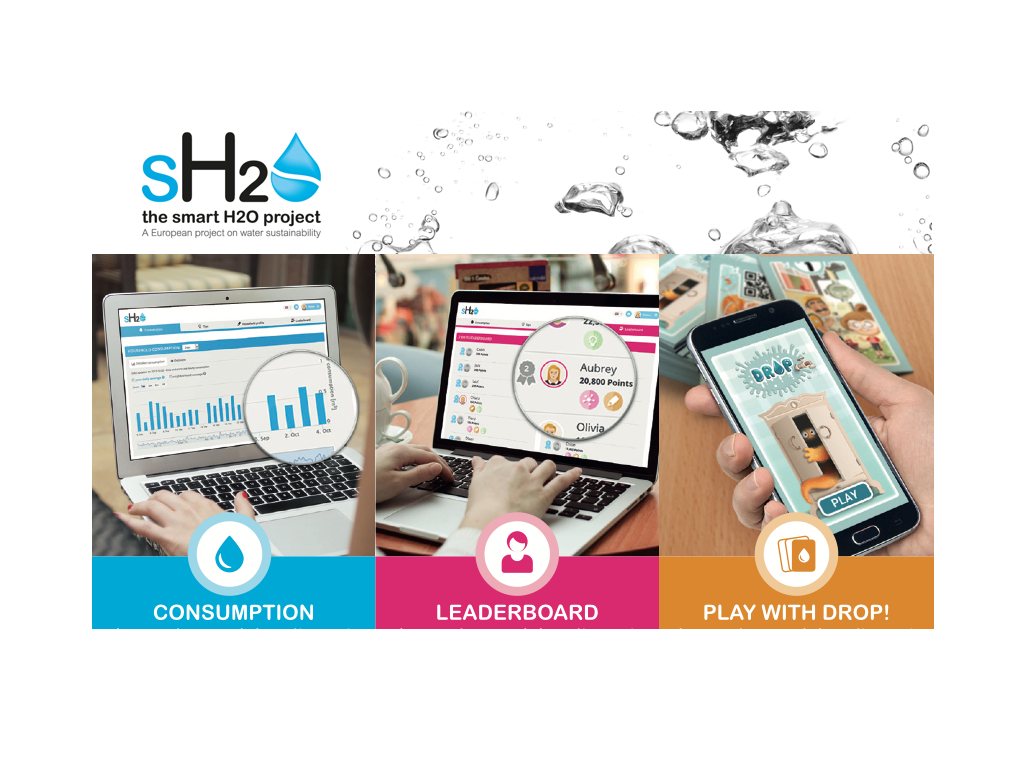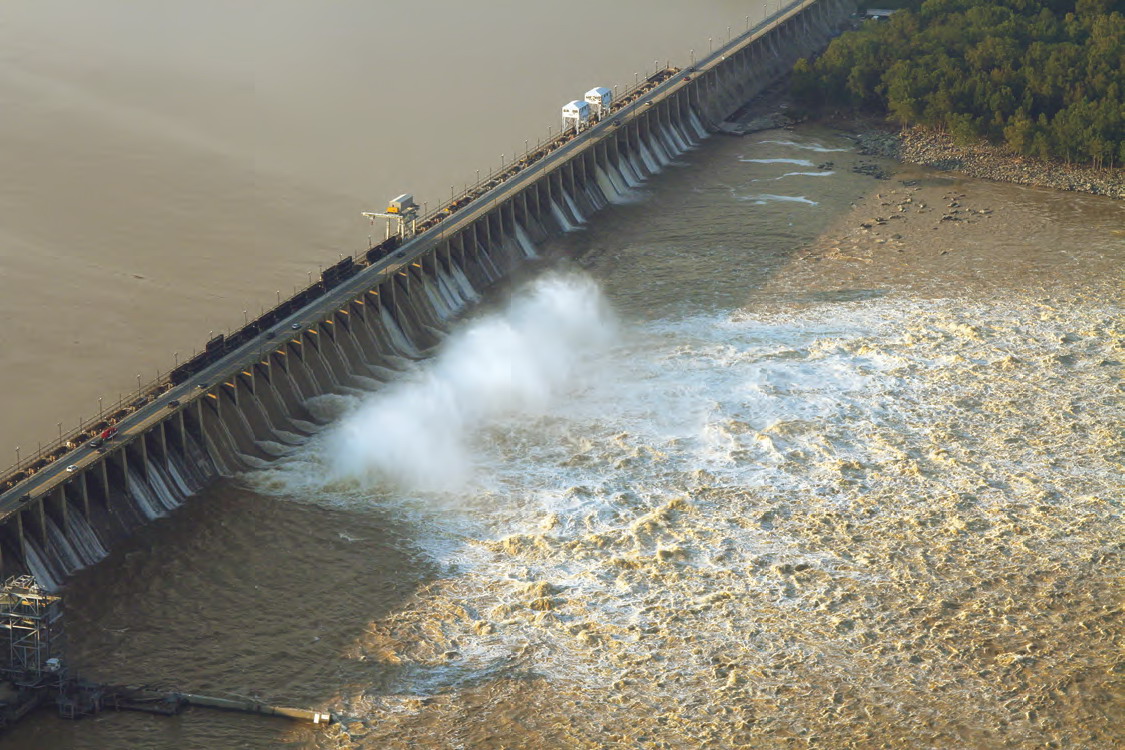Global trends in population growth and rising economic prosperity will increase the demand for energy, food and water, with more severe impact in fast-growing economies, such as in several African countries. The constraints on water, energy, and food could well hamper economic development, lead to social and geopolitical tensions, and cause lasting environmental damage. DAFNE advocates an integrated and adaptive water resources planning and management approach that explicitly addresses the water-energy-food (WEF) nexus from a novel participatory and multidisciplinary perspective. This includes social, economic, and ecologic dimensions, involves both public and private actors and is socially inclusive, enhances resource efficiency and prevents the loss of ecosystem services in regions where large infrastructures exist or are being built and intensive agriculture is expanding. A decision-analytic-framework (DAF) will be developed to quantitatively assess the social, economic, and environmental impact of expanding energy and food production in complex physical and political contexts, where natural and social processes are strongly interconnected and the institutional setting involves multiple stakeholders and decision-makers. The DAFNE approach will be demonstrated by analyzing two cross-boundary case studies, the Zambezi and the Omo river basins. The WEF nexus will be quantified and analyzed as the trade-off between conflicting objectives such as hydropower production vs irrigation, land exploitation vs conservation, etc. The nexus will be translated in economic values and impact on growth, ecosystems and ecosystem services. DAFNE will allow a better understanding of the WEF nexus, and generate and explore alternative planning and management solutions based on the cooperation of public and private stakeholders, which foster the profitable but equitable use of resources without transgressing environmental limits or creating societal and/or stakeholder conflicts.
Category: Uncategorized
[:en]SO-WATCH[:it]Lake Como[:]
Climate change and growing population are expected to severely affect freshwater availability across much of Europe by the end of 21th century. In a warmer climate, many river basins, especially in the Iberian Peninsula, Italy, and the Balkan region, are likely to become more prone to periods of reduced water supply, risking considerable impacts on the society, the environment, and the economy. Early-stage drought conditions will develop across southern Europe as early as a decade from now and will intensify as the century progresses, with up to a 40 percent reduction in minimum stream flow by the 2080s in this area. The cost of drought in Europe, which over the past three decades has amounted to over 100 billion euros, will considerably increase as future droughts are expected to be more severe and long lasting. How to deal with these climate change effects is not anymore a long-term planning problem, it is rather a short/medium-term management challenge, which has already manifested its potential negative impact in a number of situations. For example, in the last twelve years, the Lombardy region, Italy, experienced a number of extremely dry years (e.g., 2003 and 2005) when most of the river basins suffered severe water crises. These droughts exacerbated the conflicts between the river basin stakeholders, ultimately generating significant economic losses. In these areas, planning and designing adaptation measures is inescapable to secure food and energy while balancing environmental sustainability. Yet, a complete understanding of the risks associated with the incoming droughts by the multiple local institutions concerned with water management is not easily and quickly achievable. Historically, water availability has not been a major limiting factor in the region and water abundance rather than scarcity was often the primary concern. As a consequence, water institutions are not inclined to change their consolidated practices and this policy inertia represents a major barrier for policy change, particularly under the non-stationary conditions predicted for the next years. The last-century dominant approach to cope with water scarcity largely relied on a hard-path, by investing in centralized, large-scale infrastructures such as dams and distribution systems, with the purpose of expanding the existing supply capacity. Yet, nowadays, such a hard-path is becoming economically, socially and environmentally unsustainable. The absence of stationarity also complicates the evaluation process in planning new infrastructures, as past hydrologic conditions no longer reflect future ones.
The SO-WATCH project aims to develop and test a novel decision-analytic framework to assist decision-makers of the Lake Como river basin (Italy) in designing and assessing alternative soft-path adaptation measures to increase the system flexibility by means of distributed and participatory management, coordination mechanisms, low-cost and reversible infrastructural interventions, and smart economics. This increased flexibility will contribute in improving the overall water productivity at the river basin scale by making water management more efficient under current and projected hydro-climatic and socio-techno-economic conditions.
IMPREX
Recent hydrological extreme events demonstrate the vulnerability of European society to water-related natural hazards, and there is strong evidence that climate change will worsen these events. An improved forecasting through better prediction of drivers of this type of events is urgently needed to appropriately inform science-based risk management strategies and adaptation options. Such enhancement in our forecast capability will increase the resilience of the European society as a whole, while reducing costs for strategic sectors and regions.
In this context, the IMPREX project is designed to support the reduction of Europe’s vulnerability to extreme hydrological events through improved understanding of the intensity and frequency of future disrupting features that may be very different from today’s reality.
By combining expertise from both public and private sector, the IMPREX project consortium aims to bridge the gap that often exists between users and providers of hydro-climatic information. The goal is to substantially improve our forecasting capability of hydrological extremes and their impacts at short to seasonal time scales.
California reservoirs
Water resources systems must cope with irreducible uncertainty in supply and demand, requiring policy alternatives capable of adapting to a range of possible future scenarios. Recent studies have developed adaptive policies based on “signposts” or “tipping points”, which are threshold values of indicator variables that signal a change in policy. However, there remains a need for a general method to optimize the choice of indicators and their threshold values in a way that is easily interpretable for decision makers. In this research, we propose a conceptual framework and computational algorithm to design adaptive policies as a tree structure (i.e., a hierarchical set of logical rules) using a simulation-optimization approach based on genetic programming. We demonstrate the approach using Folsom Reservoir, California as a case study, in which operating policies must balance the risk of both floods and droughts. Given a set of feature variables, such as reservoir level, inflow observations and forecasts, and time of year, the resulting policy defines the conditions under which flood control and water supply hedging operations should be triggered. Importantly, the tree-based rule sets are easy to interpret for decision making, and can be compared to historical operating policies to understand the adaptations needed under possible climate change scenarios.
Red River
The Red River basin is the second largest river basin in Vietnam and is experiencing rapid development in terms of population and economic growth. People are moving from rural areas to the main cities and to the capital Ha Noi, producing an increase in water and energy demands, and also in the potential impact of extreme floods. As part of the medium-long term energy and food security national strategy, a number of strategic dams were constructed on the Red River tributaries. The installed hydropower capacity accounts for more than 20% of the national one, while agriculture involves around 50% of the local workers in 501,000 ha of cultivated fields, distributed among 22 irrigation districts.
The main result of the IMRR project is Red-TwoLe, a sophisticated computer system integrating a variety of models to support the real-time operations of the four strategic reservoirs in the Red River system. Red-Twole has been installed and configured on IWRP’s server. During the Final Basin Meeting on 19th November 2015, a copy of Red-TwoLe was also delivered as ready-to-run virtual machines to the Ministry of Agriculture and Rural Development and the Ministry of Natural Resources and Environment. The computational challenges of IMRR project were extremely relevant: more than 2,000 alternative management strategies, corresponding to different tradeoffs among the multiple sectors involved, have been designed, for a total computational effort of 20 computing years relying of massive parallel computation. These solutions were evaluated under historical hydro-meteorological conditions and current water and energy demands. Project results show that there is room for improving the existing system regulation with respect to 2010 conditions, potentially attaining a reduction of 10-33% in energy deficit, 70% in flood damages, and 93% in water supply deficit. In addition, IMRR solutions ensure no overcoming of the 13.4 m dykes protecting Ha Noi downtown in case of extreme floods (i.e., 500 years return period), while also attaining better performance in water supply under extreme droughts. These solutions seem also to outperform the existing flood management guidelines under such extreme conditions.
Since the variation of the hydrologic regime due to climate change is likely to alter the medium and long term performance of the solutions designed over historical climate, IMRR first identified their main vulnerabilities under different projected climate scenarios. Then, we assessed the expected costs if no adaptation is implemented and, finally, we explored the advantage of re-designing the existing management strategies in order to mitigate climate change adverse impacts, without the need of structural upgrades and their associated financial outlays. Project results show that, depending on the climate scenario considered among the five produced by the Vietnam Institute of Meteorology, Hydrology and Environment, the performance of the existing operations with no adaptation are predicted to change from -7% to +5% in hydropower production, +35% to 520% in flood damages, and +15% to +160% in water supply deficit. However, the re-design of the management strategies allows adapting to climate change and saving 60% of the projected flood damages.
Karoun-Dez rivers
The undergoing changes in the global climate are expected to alter the hydrologic regime of many river basins worldwide. Understanding the potential vulnerabilities of water systems under these evolving conditions plays an important role in supporting strategic planning decisions. In this reserach, we contribute a multi-objective assessment of the impacts of hydrologic uncertainty on the operations of multipurpose water reservoirs systems in arid river basins. We focus our analysis on the Dez and Karoun river system, the largest catchment in Iran, under synthetically generated scenarios of streamflow and evaporation rates. The three modeled reservoirs, namely Dez, Karoun and Masjed Soleyman, are responsible for the production of 20% of total hydropower generation of the country. These dams control most of the water flowing to the downstream part of the system, where irrigation and domestic supply are strategic objectives, along with flood protection downstream of Masjed Soleyman dam. Our numerical results show that the performance of the multireservoir system is extremely sensitive to the alterations of both streamflow and evaporation rates, with evaporation rates’ uncertainty resulting to be as relevant as the one of streamflow. In addition, we show that long-term objectives are mainly vulnerable to inflows uncertainty, while evaporation rates’ uncertainty becomes more relevant on short-term objectives.
sH2O
Over the last two decades, water smart metering programs have been launched in a number of medium to large cities worldwide to nearly continuously monitor water consumption at the single household level. The availability of data at such very high spatial and temporal resolution advanced the ability in characterizing, modeling, and, ultimately, designing user-oriented residential water demand management strategies (WDMS).
However, the effectiveness of these WDMS is often context-specific and strongly depends on our understanding of the drivers inducing people to consume or save water. Models that quantitatively describe how water demand is influenced and varies in relation to exogenous uncontrolled drivers (e.g., seasonality, climatic condi- tions) and demand management actions (e.g., water restrictions, pricing schemes, education campaigns) are essential to explore water users’ response to alternative WDMS, ultimately supporting strategic planning and policy design.
Traditionally, water demand models focus on different temporal and spatial scales. At the lowest resolution, studies have been carried out, mostly in the 1990s, to model water demand at the urban or block group scale, using low time resolution (i.e., above daily) consumption data retrieved through billing databases or experimental measurement campaigns on a quarterly or monthly basis. The main goal of these works is to inform regional water systems planning and management on the basis of estimated relationships between water consumption patterns and socio-economic or climatic drivers. The advent of smart meters in the late 1990s made available new water consumption data at very high spatial (household) and temporal (from several minutes up to few seconds) resolution, enabling the application of data analytics tools to develop accurate characterizations of end-use water consumption profiles. The use of smart meters provides essential information to construct models of the individual consumers behaviors, which can be employed for designing and evaluating consumer-tailored WDMS that can more effectively modify the users’ attitude favoring water saving behaviors. In particular, smart meters themselves constitute technologies that promote behavioral changes and water saving attitudes via tailored feedbacks.
A general procedure to study residential water demand management relying on the high-resolution data nowadays available can be structured in the following four phases: (i) data gathering, (ii) water end-uses characterization, (iii) user modeling, (iv) design and implementation of personalized WDMS. This work is part of the SmartH2O project, which aims at creating an ICT platform to raise customers’ awareness about their consumption and pursue water savings in the residential sector. Results will be deployed in three challenging use cases, in selected districts of London (UK), Valencia (S), and Locarno (CH), potentially reaching millions of users.
Lower Susquehanna River
Current water reservoir operating policies are facing growing water demands as well as the uncertainties associated with a changing climate. Two factors strongly limit the possibility of re–designing water reservoir regulation: institutional inertia and myopia. First, the legacies of historical agreements and regulatory constraints limit the rate that reservoir operations are innovated and creates policy inertia. Water institutions are highly unlikely to change their current practices in absence of a dramatic failure or water conflict. Yet, no guarantee exists that historical management policies will not fail in coming years, especially as water managers face growing water demands and increasingly uncertain hydrologic regimes. Second, in reference to institutional myopia, although it has long been recognized that water reservoir systems are generally framed in heterogeneous socio-economic contexts involving a myriad of conflicting, non-commensurable operating objectives, our broader understanding of the multi-objective consequences of current operating rules is severely limited.
This research contributes a decision analytic framework to overcome policy inertia and myopia in complex river basin management contexts. The framework combines reservoir policy identification, many-objective optimization under uncertainty, and visual analytics to characterize current operations and discover key tradeoffs between alternative policies for balancing evolving demands and system uncertainties. The approach is demonstrated on the Conowingo Dam, located within the Lower Susquehanna River, USA. The Lower Susquehanna River is an interstate water body that has been subject to intensive water management efforts due to competing demands from urban water supply, atomic power plant cooling, hydropower production, and federally regulated environmental flows. The proposed framework initially uses available streamflow observations to implicitly identify the current but unknown operating policy of Conowingo Dam. We assume that the dam operator is a rational agent seeking to maximize primary operational objectives (i.e., guaranteeing the public water supply and maximizing the hydropower revenue). The quality of the identified baseline policy is validated by its ability to replicate historical release dynamics. Starting from this baseline policy, we then combine evolutionary many-objective optimization with visual analytics to discover new operating policies that better balance the tradeoffs within the Lower Susquehanna. Our results confirm that the baseline operating policy, which only considers deterministic historical inflows, significantly overestimates the reliability of the reservoir’s competing demands. The proposed framework removes this bias by successfully identifying alternative reservoir policies that are more robust to hydroclimatic uncertainties while also better addressing the tradeoffs across the Conowingo Dam’s multi–sector services.
Proactive
The PROACTIVE project aims to design, implement and test a new approach to homeland security that combines the traditional measures of public administrations with the latest generation of telecommunication technologies and the use of social networks as tools for monitoring and alerting the population. The concept at the heart of PROACTIVE is listening to the territory, through an innovative synthesis of heterogeneous sources: databases of the Public Administrations, data collected by sensors based on next-generation high-speed and high-reliability networks, and data provided by citizens considered as intelligent sensors. The PROACTIVE platform is based on advanced telecommunications infrastructures, connected by means of intelligent sensors, equipped with communication and computation capabilities and provides data streams enriched with context information (e.g., the position, or the presence of particular conditions, etc.). In addition to the data flows from the physical networks, PROACTIVE also monitors data flows from social networks, namely content (posts, images) created by the citizens.
These flows are intercepted by “virtual sensors”, i.e., applications of social data mining, created by Me-Source, Politecnico di Milano and Cefriel.
- People on the Move aims to monitor and predict the presence and flow of the population in near real time and with high accuracy by merging data from cellular networks, waste collection, geo-located tweets, traffic cameras and environmental sensors.
- SnowWatch analyzes photos of the mountains produced spontaneously by users or collected by webcams to identify peaks and snow levels and produce models for estimating water availability and optimal policies for water planning and management.
- LeakWatch aims to prevent disruption of canal banks with an integrated monitoring system with intelligent autonomous sensors in contact with pipes or valves to detect noise and potential leaks.


![[:en]SO-WATCH[:it]Lake Como[:] [:en]SO-WATCH[:it]Lake Como[:]](https://giuliani.faculty.polimi.it/wp-content/uploads/sowatch.png)






